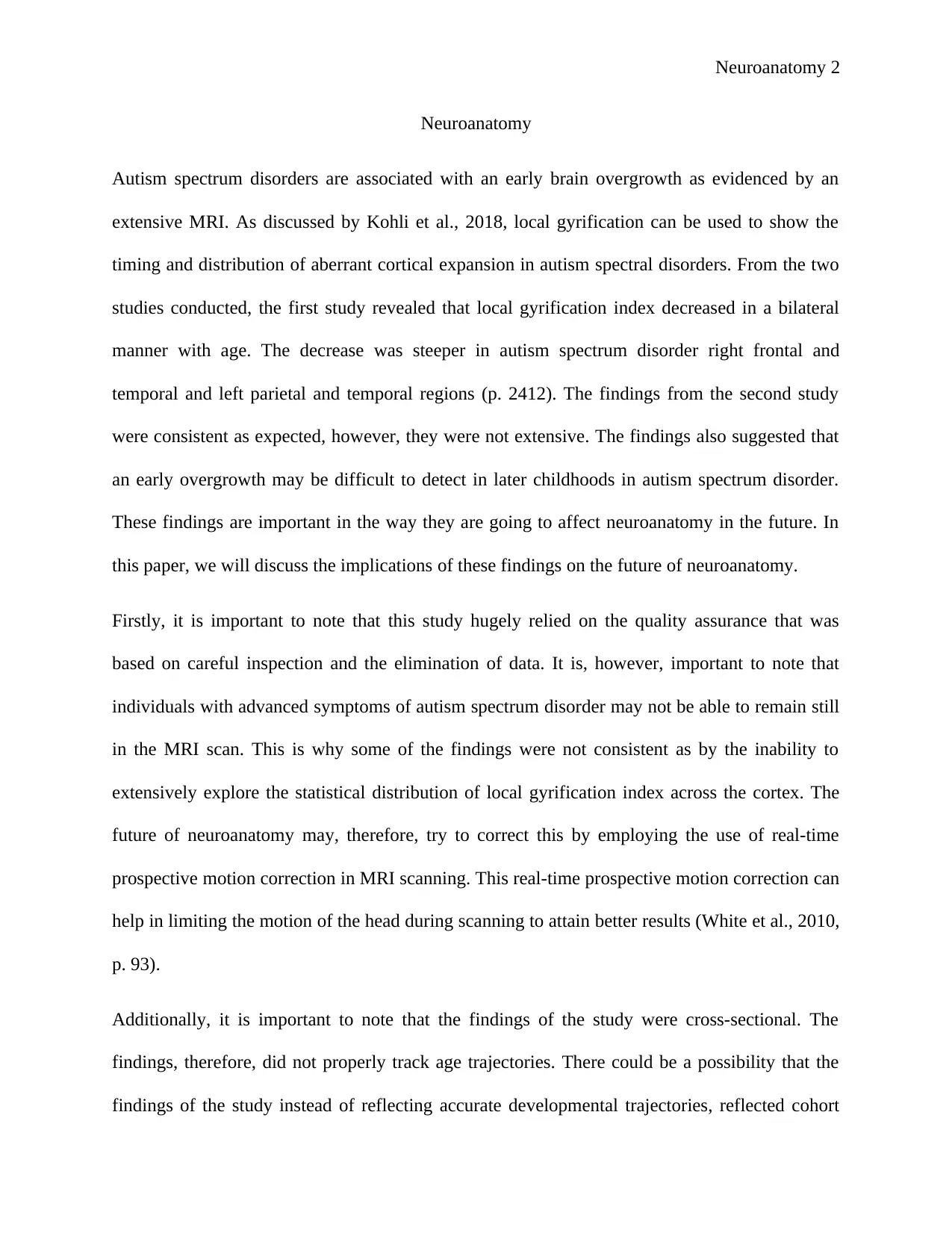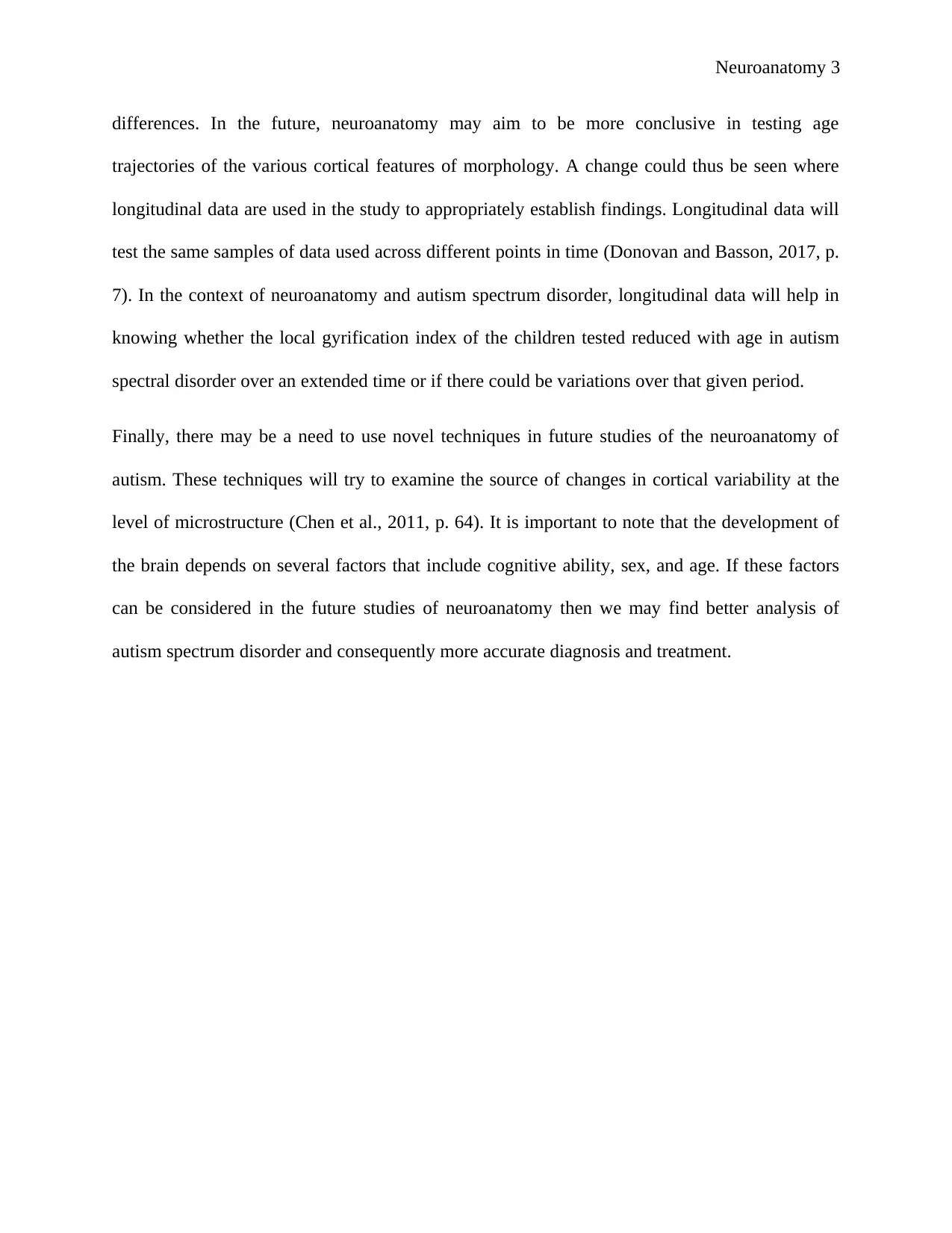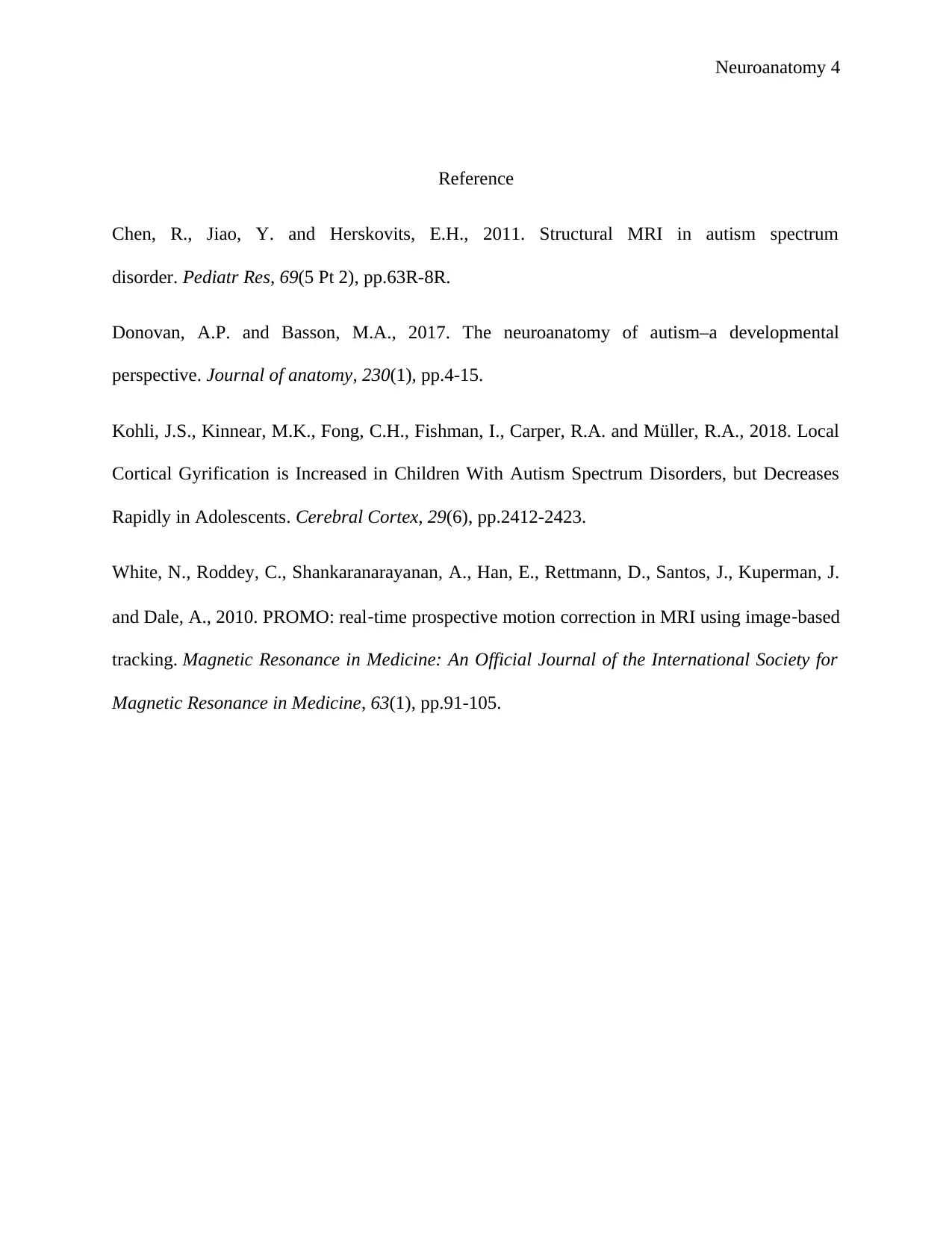Neuroanatomy Report: Future of Neuroanatomy in Autism Spectrum
VerifiedAdded on 2022/09/14
|4
|781
|18
Report
AI Summary
This report analyzes the implications of autism spectrum disorder (ASD) on neuroanatomy, particularly focusing on brain overgrowth as evidenced by MRI scans and local gyrification index (lGI). The study, referencing Kohli et al. (2018), discusses how lGI can reveal aberrant cortical expansion in ASD. The report highlights findings suggesting a bilateral decrease in lGI with age, especially in the frontal, temporal, and parietal regions. It also addresses the limitations of the studies, such as the impact of patient movement during MRI and the cross-sectional nature of the data, which may not accurately reflect age trajectories. The report suggests future directions for neuroanatomy research, including the use of real-time motion correction in MRI, longitudinal studies to track age trajectories, and the incorporation of novel techniques to examine microstructural changes. It emphasizes the importance of considering factors like cognitive ability, sex, and age in future studies to improve the diagnosis and treatment of ASD.
1 out of 4







![[object Object]](/_next/static/media/star-bottom.7253800d.svg)